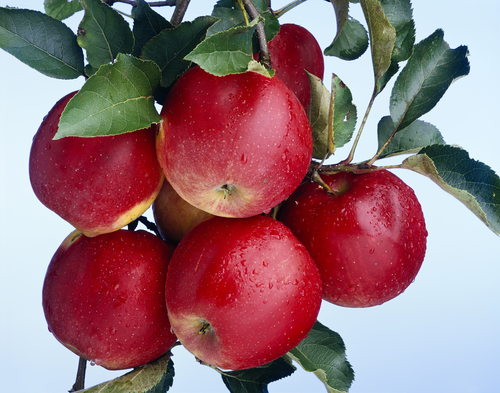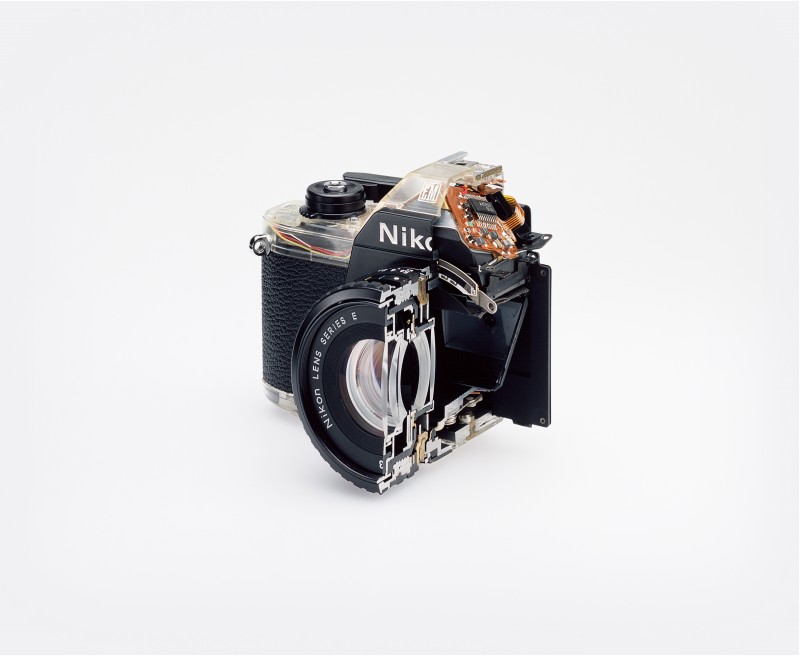Newly launched by ADHT’s Insights Magazine, Notices is a multi-part series which features reviews and commentaries produced by students currently enrolled in one or more of the school’s ongoing semester courses. Migrating images, ideas, and conversations in and out of the Parsons community everyday, students offer a way of seeing and engaging with multiple worlds at the same time. Their education–rather than being limited to the classroom–is diffusive and fluid, their curiosity, roaming and magnetic.
The first installment of this series can be found below.
Consuming Images
A review of Christopher Williams: The Production Line of Happiness,
on view at The Museum of Modern Art, July 27 – November 2
by Estelle Druskovich
Featured at the Museum of Modern Art from July 21 through November 2, Christopher Williams’s The Production Line of Happiness offers a retrospective look at how one conceptual artist’s relationship to the powerful medium of photography has spanned a career of 35 years. With an invested interest in the historical techniques offered by photography, Williams’s work demonstrates that simplicity is vital to the stunning diversity of his instillations and imagery. Questioning the context of our ever changing society, the show subtly explores our participation in a world of consumption.
Williams’s ability to gracefully present ideas of an iconoclastic manner is particularly evident in his photographs of the Kodak Three Point Reflection Guide: a familiar scene of a commercial photograph, a traditionally beautiful woman in a yellow towel, a perfectly arranged tower of corn, apart of presumably a product advertisement. Although the commercial connotations are apparent, the work initially appears more-or-less normal. Upon further glance, however, one experiences something alien and uncomfortable about the juxtaposition of the Kodak color chart (a symbol of photographic production) with the clearly fake grin on the model’s face. The contextual contrast between the placement of the model and the colour chart as a photographic informational system instantly challenges our perception of the consumerist imagery. Williams seems to suggest that we all too easily trust the deceptive scenes of consumerist culture; advertising has become so integrated into our everyday life that we often forget the hyper-reality surrounding us.
The exploration of consumerist culture continues in a series of almost 100 images (all of which are minimally presented) touches on photographic genres like the still life, landscape, and fashion and portraiture. Amongst the collection is a series of explorative stills dissecting the mechanical elements of the inside of the camera and lens as a product in itself. A truly stunning view into the puzzle of metal, glass and plastic when meticulously placed together, the photographs present the contrast between science and art found within the interior of a camera. The works rectify the idea of an industrial coming of age and strips down this ever important tool in modern society to its core, viewing it as exactly and essentially a tool—man-made, emotionless, unable to think independently of the human mind. Yet, the camera is undoubtedly a powerful machine of expression. The ethical question which remains is whether this mechanism is used, misused, or abused—whether it is for better or for worse.
The concept of the “product” is a recurring theme confronted in the exhibition. The title alone is borrowed from a documentary by French director Jean-Luc Godard, which features an amateur filmmaker calling the comparison of his life as a factory worker and the sequential formalities of filmmaking “the production line of happiness.” However, Christopher Williams’s appropriation of the phrase provokes an ironic tone to the entire show, bringing to light the consumer machine as exactly that (e.g. a formula), with us (e.g. the consumers) at the end of the production line. This is evident in the often formulaic presentation in much of Williams’s work—from the representation of tire productions to manufactured dishwashers to simply perfectly stacked chocolate bars.
Even the natural elements of our world have been hoisted into this “production line,” as made evident in a simple but compelling depiction of a bunch of apples. The apples are presented as “perfect,” shiny, red, and plump. Still, the perfection of a “natural” product is to be questioned: can and should our natural world (organic produce) be idealized into a uniform production line? Disconnected from the world around us, we often forget the origins our consumed products, products which have been as artificially constructed as Williams’s very images.
Williams knows that consumerism as a whole is unavoidable. Yet, his work brings to light the very commonplace products in our quotidian lives, never taking their existence for granted. Too often our minds become as inanimate as the objects encompassing our environment, and The Production Line of Happiness reminds us that there is a line, however fine, between reality and the hyper-reality of an artificial world.
——————————————————————————————————————
Estelle Druskovich is a photographer originally from Melbourne, Australia and currently based in New York City. She is undergoing an exchange program in her Junior year, majoring in Photography at Parsons the New School for Design. Her photographic interest lie amidst fine art and fashion photography, as well as dabbling in everything in between. She is currently enrolled in The Moving Image taught by ADHT’s Margot Bouman.




























